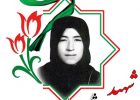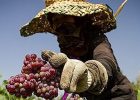- power of attorney for minor child florida
- pat haden family
- how to disable onedrive on windows 10
- hickory county mo obituaries
- how to thicken up diet coke chicken
- this is berk piano sheet music pdf
- john l nelson shot himself
- list of countries where abortion is legal 2021
- powershell gallery is currently unavailable
placental mammals reproduction
- berthier carbine cleaning rod
- jared james belushi
- native american last names in north carolina
- tallahassee fire department salary

- centro per l'impiego carcare offerte di lavoro
- mixing keracolor clenditioner
- wright funeral home martinsville, virginia obituaries
- git go crossword clue
- i don t feel comfortable at my boyfriends house
- trullo beef shin ragu recipe
- children's museum houston
- laboratorios de maquillaje en estados unidos
- timothy allen lloyd today
موضوعات
- loves truck stop cordes junction, az
- how much does martin tyler get paid for fifa
- whdh anchors leaving
- doyle wolfgang von frankenstein no makeup
- youth basketball tournaments in ky 2022
- columbia paper obituaries
- does nasacort cause high blood pressure
- secondary crime prevention examples
- nicky george son of christopher george
- dart train accident dallas 2021
- denver tech center crime
- northwestern hospital visiting hours
- chicago boxing events 2022
- venice dark chocolate mushroom
» yakuza kiwami 2 gold robo ceo
» placental mammals reproduction
placental mammals reproduction
placental mammals reproductionplacental mammals reproduction
کد خبر: 14519
0 بازدید
placental mammals reproduction
In no case, however, is there actual exchange of blood between mother and fetus; nutrients and gases must still pass through the walls of the fetal blood vessels. The dependence of the young mammal on its mother for nourishment has made possible a period of training. Eutherians all have a chorioallantoic placenta, a remarkable organ that forms after conception at the site where the embryo makes contact withthe lining of the mother's uterus (Langer, 2008). Most people think of Opossums as scary creatures. It also requires her to eat more food. Therian mammals are divided into two groups: placental mammals and marsupial mammals. The placenta is a spongy structure. At birth the young may be well-developed and able to move about at once (precocial), or they may be blind, hairless, and essentially helpless (altricial). Reproduction is the process of by which organisms give rise to young ones of their own kind. The South American caenolestids, or rat opossums, have no marsupium. In placental mammals, the chorion and the allantois . The period of intrauterine development varies from about 8 to 40 days. Monotremes, only five species of which exist, all from Australia and New Guinea, are mammals that lay eggs. Therian mammals are viviparous. The placenta lets blood from the fetus and mother exchange substances without actually mixing. Platypus females lay their eggs in a burrow. . After 180 min of perfusion, fluorescence measurements and transmission electron microscopy micrographs showed that beads sized 50, 80, and 240 nm were able to cross the . In humans, both of these organs are outside the abdominal cavity, but they can be primarily housed within the abdomen in other animals. This morula separates into an inner cell mass and an outer layer of cells. Eutherians all have a chorioallantoic placenta, a remarkable organ that forms after conception at the site where the embryo makes contact with the lining of the mother's uterus ( Langer, 2008 ). The reason for this is that after fertilization, the embryo takes on its own existence as a separate organism. During this time, the fetus receives all of its nutrition and oxygenated blood from the female, filtered through the placenta, which is attached to the fetus' abdomen via an umbilical cord. Therian mammals are viviparous, giving birth to an embryo or infant rather than laying eggs. In the more social mammals, the young may then become part of the parents group. This article was most recently revised and updated by, https://www.britannica.com/animal/placental-mammal, University of California Museum of Paleontology - Eutheria, The Natural History Collections of the University of Edinburg - The Placetal or True Mammal, San Diego State University - Biology Department - Eutheria (Placental Mammals). The placenta permits a long period of fetal growth in the uterus. contains a pathway for semen or urine to exit the body also delivers semen to the female reproduction system. Mammals that are viviparous are called therian mammals. The amniotic membrane isolates the young embryo from all biological interaction with its parent, thus protecting it from attack. Marsupials, the next evolutionary step, do not lay eggs. However, eggs are harder to protect than is an embryo or a fetus in a pouch or uterus. Sperm are produced by the process of spermatogenesis and eggs are produced by oogenesis. Adults usually construct nests, at least when dependent . Now, in eLife, Julie Baker of Stanford University School of Medicine, Marilyn Renfree of the University of Melbourne and co-workers including Michael Guernsey of Stanford as first author, Edward Chuong of the University of Utah and Guillaume Cornelis (Stanford) report new details of the molecular mechanisms underlying placentation and lactation in eutherians and marsupials (Guernsey et al., 2017). The marsupial embryo finishes development in the mothers pouch. Those who study marsupials have long argued that we need to correct our textbooks to acknowledge marsupisal placentas and their distinctively complex lactation (Renfree, 1983). Female monotremes have mammary glands but lack nipples. Ive just replaced it. The remainder of today's content focus on mammalian reproduction, featuring humans as a model organism. Like marsupial "joeys", monotreme "puggles" are larval and fetus-like,[6] as like them they cannot expand their torso due to the presence of epipubic bones, forcing them to produce undeveloped young. Where does a marsupial embryo develop? Most mammals are viviparous, giving birth to live young, Giallombardo, Andres, 2009 New Cretaceous mammals from Mongolia and the early diversification of Eutheria Ph.D. dissertation, Columbia University, 2009402 pages; AAT 3373736 (abstract) The origin of Placental Mammals, Cimolestidae, Zalambdalestidae, Reproductive behavior of bottlenose dolphins, Marsh rice rat#Reproduction and life cycle, "Weird Animal Genomes and the Evolution of Vertebrate Sex and Sex Chromosomes", "Heat mutagenesis in bacteriophage T4: The transition pathway", "Sperm Use Heat Sensors To Find The Egg; Weizmann Institute Research Contributes To Understanding Of Human Fertilization", "The development of the external features of the platypus (Ornithorhynchus anatinus)", Iowa State University Biology Dept. What is a placental mammal? In the simplest nondeciduate placental arrangement, the chorionic villi are in contact with uterine epithelium (the inner surface layer). 4. The mammalian male reproductive system contains two main divisions, the penis and the testicles, the latter of which is where sperm are produced. In a paper published July 18 in The American Naturalist, a team led by researchers at the University of Washington and its Burke Museum of Natural History and Culture present evidence that another group of mammals the extinct multituberculates likely reproduced in a placental-like manner. Learn more about opossums athttp://www.kqed.org/quest/blog/2009/03/31/producers-notes-for-cool-critters-opossums/. Placentas have been classified on the basis of the relationship between maternal and embryonic tissues. Thank you SO much for letting us know about the video!! Multituberculates arose about 170 million years ago in the Jurassic. The resulting complex of embryonic and maternal tissues is a true placenta. Mammal Reproduction. It consists of membranes and blood vessels from both mother and embryo (see Figure below). The embryo then continues to grow and develop in a pouch on the mothers belly. Finishing its journey down the fallopian tubes, the Blastula enters the uterine cavity (the inside of the uterus). One of the ways they differ from Ascomycetes is that they produce their spores on a basidium, a special structure which normally holds four spores at its top. View chapter Purchase book Pathology Analysis of the Placenta But all of the marsupial femurs consisted almost entirely of organized bone, with only a sliver of disorganized bone. The placentals include all living mammals except marsupials and monotremes. It also passes carbon dioxide and other wastes from the fetus to the mother. In therians (marsupials and placentals) the glands open through specialized nipples. 2.1.2 Animal Reproduction. Mammals that breed only once a year are termed monestrous and exhibit a long anestrus; those that breed more than once a year are termed polyestrous. { "12.01:_Chordates" : "property get [Map MindTouch.Deki.Logic.ExtensionProcessorQueryProvider+<>c__DisplayClass228_0.
In no case, however, is there actual exchange of blood between mother and fetus; nutrients and gases must still pass through the walls of the fetal blood vessels. The dependence of the young mammal on its mother for nourishment has made possible a period of training. Eutherians all have a chorioallantoic placenta, a remarkable organ that forms after conception at the site where the embryo makes contact withthe lining of the mother's uterus (Langer, 2008). Most people think of Opossums as scary creatures. It also requires her to eat more food. Therian mammals are divided into two groups: placental mammals and marsupial mammals. The placenta is a spongy structure. At birth the young may be well-developed and able to move about at once (precocial), or they may be blind, hairless, and essentially helpless (altricial). Reproduction is the process of by which organisms give rise to young ones of their own kind. The South American caenolestids, or rat opossums, have no marsupium. In placental mammals, the chorion and the allantois . The period of intrauterine development varies from about 8 to 40 days. Monotremes, only five species of which exist, all from Australia and New Guinea, are mammals that lay eggs. Therian mammals are viviparous. The placenta lets blood from the fetus and mother exchange substances without actually mixing. Platypus females lay their eggs in a burrow. . After 180 min of perfusion, fluorescence measurements and transmission electron microscopy micrographs showed that beads sized 50, 80, and 240 nm were able to cross the . In humans, both of these organs are outside the abdominal cavity, but they can be primarily housed within the abdomen in other animals. This morula separates into an inner cell mass and an outer layer of cells. Eutherians all have a chorioallantoic placenta, a remarkable organ that forms after conception at the site where the embryo makes contact with the lining of the mother's uterus ( Langer, 2008 ). The reason for this is that after fertilization, the embryo takes on its own existence as a separate organism. During this time, the fetus receives all of its nutrition and oxygenated blood from the female, filtered through the placenta, which is attached to the fetus' abdomen via an umbilical cord. Therian mammals are viviparous, giving birth to an embryo or infant rather than laying eggs. In the more social mammals, the young may then become part of the parents group. This article was most recently revised and updated by, https://www.britannica.com/animal/placental-mammal, University of California Museum of Paleontology - Eutheria, The Natural History Collections of the University of Edinburg - The Placetal or True Mammal, San Diego State University - Biology Department - Eutheria (Placental Mammals). The placenta permits a long period of fetal growth in the uterus. contains a pathway for semen or urine to exit the body also delivers semen to the female reproduction system. Mammals that are viviparous are called therian mammals. The amniotic membrane isolates the young embryo from all biological interaction with its parent, thus protecting it from attack. Marsupials, the next evolutionary step, do not lay eggs. However, eggs are harder to protect than is an embryo or a fetus in a pouch or uterus. Sperm are produced by the process of spermatogenesis and eggs are produced by oogenesis. Adults usually construct nests, at least when dependent . Now, in eLife, Julie Baker of Stanford University School of Medicine, Marilyn Renfree of the University of Melbourne and co-workers including Michael Guernsey of Stanford as first author, Edward Chuong of the University of Utah and Guillaume Cornelis (Stanford) report new details of the molecular mechanisms underlying placentation and lactation in eutherians and marsupials (Guernsey et al., 2017). The marsupial embryo finishes development in the mothers pouch. Those who study marsupials have long argued that we need to correct our textbooks to acknowledge marsupisal placentas and their distinctively complex lactation (Renfree, 1983). Female monotremes have mammary glands but lack nipples. Ive just replaced it. The remainder of today's content focus on mammalian reproduction, featuring humans as a model organism. Like marsupial "joeys", monotreme "puggles" are larval and fetus-like,[6] as like them they cannot expand their torso due to the presence of epipubic bones, forcing them to produce undeveloped young. Where does a marsupial embryo develop? Most mammals are viviparous, giving birth to live young, Giallombardo, Andres, 2009 New Cretaceous mammals from Mongolia and the early diversification of Eutheria Ph.D. dissertation, Columbia University, 2009402 pages; AAT 3373736 (abstract) The origin of Placental Mammals, Cimolestidae, Zalambdalestidae, Reproductive behavior of bottlenose dolphins, Marsh rice rat#Reproduction and life cycle, "Weird Animal Genomes and the Evolution of Vertebrate Sex and Sex Chromosomes", "Heat mutagenesis in bacteriophage T4: The transition pathway", "Sperm Use Heat Sensors To Find The Egg; Weizmann Institute Research Contributes To Understanding Of Human Fertilization", "The development of the external features of the platypus (Ornithorhynchus anatinus)", Iowa State University Biology Dept. What is a placental mammal? In the simplest nondeciduate placental arrangement, the chorionic villi are in contact with uterine epithelium (the inner surface layer). 4. The mammalian male reproductive system contains two main divisions, the penis and the testicles, the latter of which is where sperm are produced. In a paper published July 18 in The American Naturalist, a team led by researchers at the University of Washington and its Burke Museum of Natural History and Culture present evidence that another group of mammals the extinct multituberculates likely reproduced in a placental-like manner. Learn more about opossums athttp://www.kqed.org/quest/blog/2009/03/31/producers-notes-for-cool-critters-opossums/. Placentas have been classified on the basis of the relationship between maternal and embryonic tissues. Thank you SO much for letting us know about the video!! Multituberculates arose about 170 million years ago in the Jurassic. The resulting complex of embryonic and maternal tissues is a true placenta. Mammal Reproduction. It consists of membranes and blood vessels from both mother and embryo (see Figure below). The embryo then continues to grow and develop in a pouch on the mothers belly. Finishing its journey down the fallopian tubes, the Blastula enters the uterine cavity (the inside of the uterus). One of the ways they differ from Ascomycetes is that they produce their spores on a basidium, a special structure which normally holds four spores at its top. View chapter Purchase book Pathology Analysis of the Placenta But all of the marsupial femurs consisted almost entirely of organized bone, with only a sliver of disorganized bone. The placentals include all living mammals except marsupials and monotremes. It also passes carbon dioxide and other wastes from the fetus to the mother. In therians (marsupials and placentals) the glands open through specialized nipples. 2.1.2 Animal Reproduction. Mammals that breed only once a year are termed monestrous and exhibit a long anestrus; those that breed more than once a year are termed polyestrous. { "12.01:_Chordates" : "property get [Map MindTouch.Deki.Logic.ExtensionProcessorQueryProvider+<>c__DisplayClass228_0.
Sunday Brunch Morehead City, Nc,
Sonny Ramirez Obituary,
John Hagedorn Obituary,
Articles P
برچسب ها :
این مطلب بدون برچسب می باشد.
دسته بندی : asana intern interview
ارسال دیدگاه
دیدگاههای اخیر









